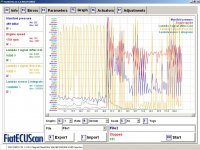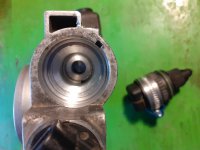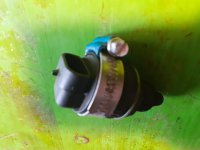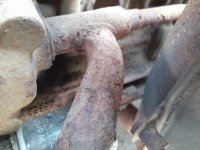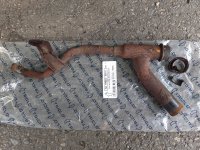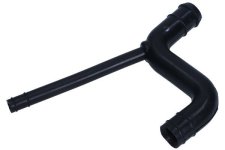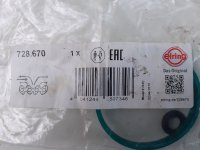Mike1alike
Established member
RalphM Yes, it is. The throttle butterfly works good, the same does it's position sensor.
judderbar This is what I suspect the most to be the cause of the problem, the cooling system. There was no presure inside, after the engine was running. Then I've put the new cap and for the first time something worked different and the problem was gone, even if just for a ride or 2. Then today, when I've put water in (insted of coolant, just to wash the system, I will put coolant soon) at the begining engine ran nice. And those pieces that came out (by the way there is pressure now, so the water pump is working and the engine does not overheat at all) made me think there might be more of that and it's like the pump admision is somehow clogged and in that way, sending water to the circuit but not having on the intake the necessary amount, it could create air pokets. And I'm thinking that the sensor cannot read temperature when air is on the sensor insted of coolant and happens this problem, the one you've experienced due to the lower temperature registred by the sensor (just as in cold start) the computer gives the signal to rev up a little. And then, when coolant comes again, the signal is the one for correct rev on hot engines. So the air pokets come in waves and this creats the surging.
I would have thought that by purging the system, whatever is clogging it would come out. Or maybe I just didn't bled it good, I will try again tomorrow.
If I bleed it and the problem is still there, I' m thinking I will try to put some pressured water inside the engine, by a hose connected somewhere up from where to push down onto water pump and have the radiator hose open so that if something is there, to get it out.
The thermostat would be a good place for that, but the cold water will close it so that's not good. I think a line from the short circuit should work. If you can recommand me the best place to insert the water in the cold engine, please tell.
judderbar This is what I suspect the most to be the cause of the problem, the cooling system. There was no presure inside, after the engine was running. Then I've put the new cap and for the first time something worked different and the problem was gone, even if just for a ride or 2. Then today, when I've put water in (insted of coolant, just to wash the system, I will put coolant soon) at the begining engine ran nice. And those pieces that came out (by the way there is pressure now, so the water pump is working and the engine does not overheat at all) made me think there might be more of that and it's like the pump admision is somehow clogged and in that way, sending water to the circuit but not having on the intake the necessary amount, it could create air pokets. And I'm thinking that the sensor cannot read temperature when air is on the sensor insted of coolant and happens this problem, the one you've experienced due to the lower temperature registred by the sensor (just as in cold start) the computer gives the signal to rev up a little. And then, when coolant comes again, the signal is the one for correct rev on hot engines. So the air pokets come in waves and this creats the surging.
I would have thought that by purging the system, whatever is clogging it would come out. Or maybe I just didn't bled it good, I will try again tomorrow.
If I bleed it and the problem is still there, I' m thinking I will try to put some pressured water inside the engine, by a hose connected somewhere up from where to push down onto water pump and have the radiator hose open so that if something is there, to get it out.
The thermostat would be a good place for that, but the cold water will close it so that's not good. I think a line from the short circuit should work. If you can recommand me the best place to insert the water in the cold engine, please tell.


